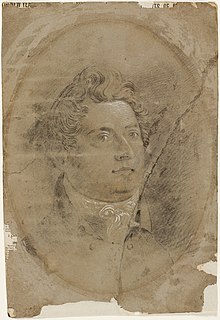Francis Howard Greenway | |
|---|---|
 Francis Howard Greenway, 1814-1837, unknown artist, pencil ML 482 | |
| Born | 20 November 1777 Mangotsfield, Bristol, England |
| Died | September 1837 (aged 59) near Newcastle, New South Wales, Australia |
| Resting place | Glebe burial ground, East Maitland, New South Wales[1] 32°45′33.2″S 151°34′30.6″E / 32.759222°S 151.575167°E |
| Monuments | Francis Greenway High School, Beresfield |
| Nationality | English |
| Occupation | Architect |
| Years active | 1800–1835 |
| Known for | Early colonial Australian architecture |
| Notable work | List of works |
| Criminal charge | Forgery |
| Criminal penalty | 14 years transportation to Australia |
| Criminal status | Discharged |
| Children | 7 |
Francis Howard Greenway (20 November 1777 – September 1837) was an English-born architect who was transported to Australia as a convict for the alleged crime of forgery. He became known as the ‘forefather of Australian architecture’. In New South Wales he worked for the Governor, Lachlan Macquarie, as Australia's first government architect. He became widely known and admired for his work displayed in buildings such as St Matthew's Church, St James' Church and Hyde Park Barracks.[2]